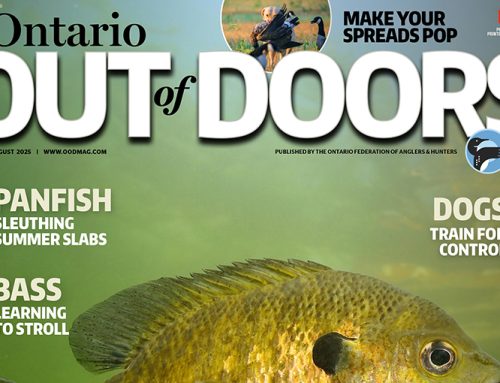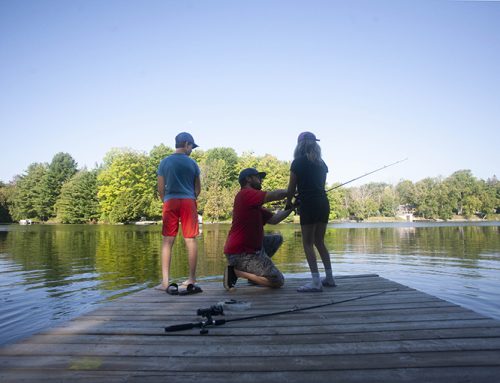Most people will never know that they nearly walked into to a black bear. In the majority of cases, a bear will detect a human well in advance and slip off before any encounter takes place.
But there are times when a bear’s first instinct isn’t to leave. It might be trying to protect a kill site or gather its cubs, or you may have surprised it and it’s not sure of what you are. In a worst-case scenario, it might be stalking you.
In each case, how you react could be the difference between an exciting story and a tragic outcome.
“When you encounter a bear that doesn’t run, knowing what the bear is doing and interpreting it is important,” said Mike Hall, the Provincial Coordinator for The Ministry of Natural Resources’ Bear Wise program.
“It’s all about placing the behavior in proper context,” he said. “Pay attention to the bear’s response. If it is noisy, popping its jaws or swatting the ground, that bear is saying it needs room.”
Back away
If the animal is on a kill, Hall advises to back away slowly, likewise, if it is a female with cubs. In the latter case, determine where the cubs are and retreat so you are not between them and their mother.
The idea is to create room between you and the bear so it doesn’t feel threatened. “Most bear encounters will end there,” he said.
Should a non-predatory bear advance, Hall says to stop, stand your ground and speak firmly to it. Wave your arms so you appear bigger. If the bear persists, whistle, yell, use an air horn if you’ve got one, or throw objects. If the bear continues to advance, get your bear spray ready— or anything you may have to defend yourself—and hope you don’t have to use it.
Fight back
Predatory bears, while extremely rare, require a different approach, Hall explains. These are typically mature male bears in remote areas that have no experience with humans. “They just look upon us as a new sort of prey,” he said.
“They don’t make noise when they approach. They just press forward, gauging your reaction. The worst thing you can do is run or turn your back to them. Instead, get aggressive with them immediately. The more any bear advances, the more aggressive you should be,” he said. “Never run from any bear. You can’t outrun them or out climb them.”
Bears take running as a sign of weakness and it emboldens them. Running is what prey does.
If the situation escalates into an attack, fight back as hard as you can. Despite popular belief, Hall says playing dead is not a good strategy.
“If a bear makes contact, aim to hurt it. Gouge at its eyes. Use whatever you have,” Hall advises.
Of course, the best approach is a proactive one. Here are some tips to remember when in bear country.
- Make noise when you are travelling – use bear bells, talk or sing.
- Avoid areas with abundant bear sign. If you see a bear, steer clear of it.
- If you have an unleashed dog with you, it should be trained well enough to call it off the bear. Failing that, keep it on a lead. If a dog agitates a bear and the bear gives chase, the dog will run straight to where it feels safest – you.
- Carry bear spray and an air horn. Be very familiar with how to use them, and the spray’s limitations.
- Hang food high in trees, away from campsites. Don’t bring snacks in tents. Placing food in a vehicle might cause the bear to damage your vehicle to get at it.
- Carry an easily accessible hatchet, knife or firearm (if permitted in the area).
Live in bear country? Comment below with your safety tips for what to do if a bear gets too close.







Having had a few nasty encounters in my lifetime, my advice it to carry a rifle. Sad that in Ontario we can’t carry a sidearm – but that would just make way too much sense. Where our camp is located, the MNR has recently been relocating problem bears – which makes it that much more of a concern. But if you can’t reasonably give a bear room/back away, you need to be armed. I’ve never had a problem in parks where firearms are not allowed, but I have never gone in those places without my canister of bear spray.